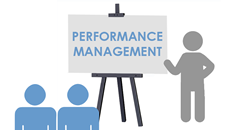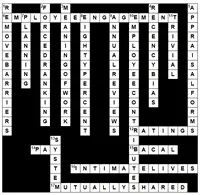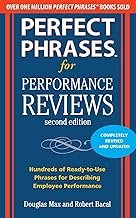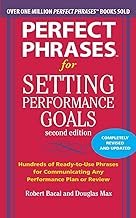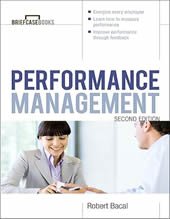Examining Both Individual Employee Variables and System Variables
Your goal as a manager is to improve the performance of every staff member and the overall performance of your work unit. The performance review is one of the tools you need to reach that goal. In order to use the review as an effective tool, you need to understand where performance comes from. How does good performance happen and, perhaps more importantly, how does bad performance happen?
Employee Variables
Performance reviews as you have probably experienced them focus on employee behavior, skills, ability, knowledge, and attitudes. It’s intuitively sensible that an employee who is performing well is somehow different from one who is performing less well. Take a look at the forms you currently use to “review” performance: every item listed there, no matter what kind of form, is going to be an employee variable. That reflects the importance we place on the individual employee and his or her characteristics.
Here are some examples of these characteristics:
Completes task quickly (employee speed)
Knowledgeable about product line (employee knowledge)
Always on time (employee habits)
Interacts well with others (employee interpersonal skills)
Demonstrates excellent team leadership skills (employee leadership skills)
You get the idea. There are hundreds, perhaps thousands of these employee characteristics used every day to evaluate and review employee performance. So, to sum up the issue, superior employee performance is partly a result of the employee behaving differently than the poor performer and possessing superior attitudes, skills, abilities, and knowledge. Individual characteristics or variables are only one contributor to performance.
System Variables More Powerful Influence On Employee Performance Than You Think
In the performance review systems that you are most familiar with, employee variables are treated as the only determinants of good and poor performance. That’s not so. Focusing only on employee variables almost guarantees that the performance review is going to be less effective in improving both individual performance and work unit/company performance. If we want to improve performance, we need to look at both the employee and the system within which he or she works.
What are system variables or system characteristics?
System variables refer to the larger environment in which each employee works. They include processes and procedures within the workplace, and the tools supplied to the employee. Here’s a quick list of possibilities. Notice that none of these are under the direct control of the employee.
• Skill of manager and managerial style
• Available budget
• Quality and appropriateness of tools
• Training to use the tools
• Behavior of coworkers
• Administrative policies and procedures (e.g., red tape)
• Design of work flows
• Customer expectations
• Marketing strategies
• Overall company planning
Before we look at some examples, here’s a key point. System variables are not under the direct control of the individual employee. They are the givens in the work environment.
The startling thing about system variables and their effects on performance is that system variables can heavily influence employee performance, but they are not under the control of individual employees.
Some of these factors are under your control as manager. Some may be under the control of other departments (e.g., the human resources department), while others may be controlled by senior executives. There may even be some that are not controlled by anyone in your organization, such as changes in the economy or customer demands.
